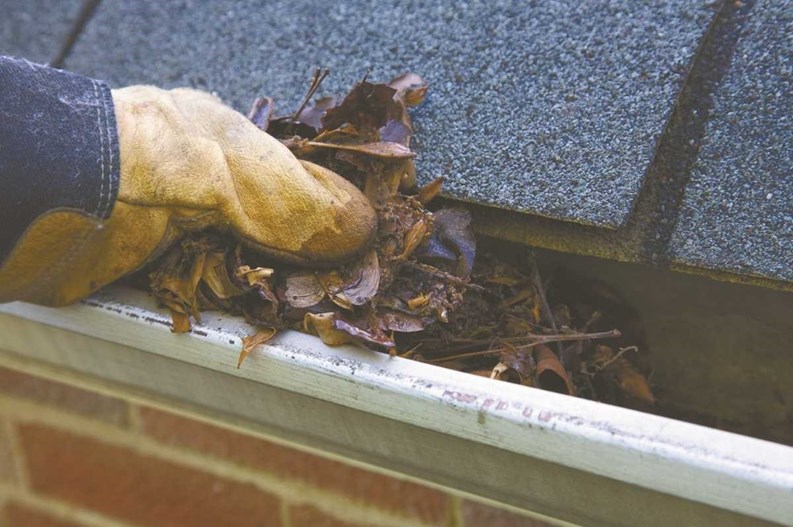Snow, ice, freezing, thawing, refreezing all take such a toll on New England properties that it’s practically a cliché—but it’s a cliché that condo trustees and managers have to deal with every spring.
Paul Carraccio is president of TPW Management in Burlington, Vermont. His clients include ski resort townhome villages where owners are mostly seasonal residents. “All the impacts from snow and ice building up mean we always have to check for roof damage and leaks,” he says, adding that ice is such an issue in northern New England “there are no rain gutters on these buildings” and roofs are often metal and steeply pitched.
With all this roof runoff, controlling stormwater and snowmelt on the ground becomes the other major challenge. Newer buildings incorporate foundation and perimeter drains, “but you have to hope they were correctly designed and installed,” says Carraccio. “These designs should work if they were done right… even with new construction, there’s no guarantee.”
And then there are the weather wild cards. “We had some real damage after Hurricane Irene [in August, 2011],” at several Vermont ski area properties, he points out. “Wherever there was a concentration of water flow, that’s where it really got hammered, especially in the valleys.” In more typical years, he and his staff take an inventory of winter damage in early spring. “We first evaluate the buildings and grounds, then we enlist the help of engineers or contractors—such as excavators—for site work.”
In ski country, he notes, townhouse complexes at higher elevations “can get more intensive snow deposits… We look for roof problems and places where snow may have been packed against walls.” Also, the outside-mounted vents for appliances, heaters and sewer pipes are especially vulnerable to the worst damages of weather. “We have to check the dryer and exhaust vents, and make sure they are not blocked or broken,” states Carraccio.
On the outside grounds, he continues, “We make sure drainage ditches and culverts are all working… and check over all the roadways, curbing and drains. The snowplow vehicles really chew them up [every year]. We can sometimes patch the lawns that got torn, and do a minor, quick, pavement patch.”
He recommends getting professional, insured contractors for more intensive jobs, such as paving and roof work. “I will tell the board members or trustees, ‘Don’t try to do it yourself… and cut corners with someone who’s not insured. Although property management and maintenance may seem like a low-risk industry, the association board is ultimately liable.” While accidents may be rare, when one does occur, “it can be really bad,” he warns. “Some management companies hire workers under the table… and don’t carry insurance. It’s especially important for anyone doing inspections or repairs on the roofs. The rate for workers’ compensation payments is different for employees doing roof work,” he notes, adding a warning to “only use qualified, properly insured individuals to go up on the roof.” He advises condo boards to be aware of that distinction—and to notice that insurers may apply an increased risk in roofing projects.
What’s Up, on the Roof?
It’s not just shingles and flashing that need attention on rooftops after the winter. Dana Isaacson, a portfolio manager with Greater Boston Properties in Boston, points out that the turnover from heating to cooling “may mean some maintenance with the HVAC equipment that’s on the roof.” His firm serves a number of city buildings with flat roofs, which may mean a rubber membrane that needs to be checked. He also notes that roof work requires specialized help. “There are actually companies that can do [that kind of] maintenance project for you. They’ll clear gutters and repair roof membranes.”
“With roofs,” he continues, “you need to plan 30-40 years in advance. The warranties, whether they’re flat, rubber roofs or a sloped, shingle style, can be for up to 45 years.” He points out that if springtime inspections uncover problems on the roof, “repairs should be covered by the warranty, although sometimes you have to take care of seams or flashing, which may not be covered. Those details might be considered a labor cost, and may only have a one-year guarantee. Also, if whoever repairs the roof is not the original installer, make sure they go by the manufacturer’s specs, or [doing anything else] will void the warranty.”
“Bottom line,” he contends, “is that it’s very short money to do a bi-annual inspection on the roof… especially an older roof.” This brings up the importance of crafting a timeline for springtime projects, especially noting who is responsible for checking and initiating seasonal tasks. “Our vendors often contact us, especially for items that are [government] regulated. They’ll notify us that it’s time for inspections and maintenance for fire and safety alarms, sprinkler systems, elevators and even HVAC. It’s very helpful with some of our contractors who are there like clockwork when these things are due each year.”
Not everything can be on an automatic schedule, however. “When you switch over from heating to cooling,” says Isaacson, “the timing is really up to the association trustees or management because it has to happen when residents request it. So some schedules need to be flexible. I like to keep dates [for yearly projects and inspections] in a property calendar. With the state-regulated inspections, there can be a steep fine if you become overdue… It’s up to $1,000 per day that you’re late on the elevator inspection, for instance, so it’s important to pay attention [to deadlines].”
Also look for snow and ice buildup on entrance canopies, which could pose a danger to passersby with melting and refreezing issues. Also water drains onto sidewalks below creating slippery surfaces for pedestrians.
At his more suburban properties, he describes post-winter tasks that include, “turning on the lawn spigots and getting the irrigation systems going… and removing burlap wrapping and the winter protection from plantings. Then there are the capital projects like curbing and grading, where you have to start thinking about these jobs in the winter when all the asphalt production is shut down. Since these suppliers depend on the weather, you have to time your paving projects carefully and be ready to go. We aim for March 15 to April 15 for asphalt projects to get done.”
Engage the Resident ‘Gardeners’
David Abel is senior manager at First Realty Management in Boston, and says his firm manages properties in eastern and central Massachusetts, as well as Rhode Island. Like almost anywhere else in New England, he admits, a major issue every spring is “repairing snowplow damage. Virtually all our townhouse properties have privately-contracted landscaping, snow removal and road maintenance, and we can take advantage of that by hiring a single firm that will do all the seasonal outdoor work, landscaping [half the year] and snowplowing. When winter is over, we have to check for gouges in the lawn, dents in the Cape Cod curbing and broken fencing, dumpster enclosures and shrubbery. The same company that caused the snowplow damage is responsible for getting the landscaping into shape. Generally, there’s something in the [landscaper’s] contract for fixing much of that.”
“We like to do a springtime site walk with the contractor, since they may have unique background knowledge [about any problems],” says Abel. “You have to start spring cleanup right after the threat of snow is over… to get leftover leaves and debris off the ground before growing season.”
“One thing we encourage at our properties is formation of a landscape committee. While it may be hard to get trustees to volunteer, there are often residents who may have lots of knowledge and interest. A committee like this is very beneficial to everyone. About two-thirds of our associations have a landscape committee in place, and the ones that don’t, we’ll subtly recommend it from year to year. Early each spring, we’ll do a complete unit-to-unit walk with the committee, management and the landscaper. Then in late spring, we check again to see which plants did not leaf out… and consider replacements.”
“This [group effort] is essential for communication and the credibility factor,” Abel continues. “With our findings, the committee can then report to the trustees. I’d much rather have a group of unit owners doing the choosing and design [of plantings]. It pays off in the long run.”
Isaacson agrees, noting that he also recommends a landscaping committee made up of residents. “Landscaping is often a team effort,” he states, “among the trustees, the management and the contractor. Having a landscaping committee helps direct the effort. They can submit their ideas, plans and suggestions to the trustees.”
It’s one way to take advantage of the hidden talents within a community, by focusing residents on projects they have a stake in, and find appealing. Isaacson says, “I tell clients, ‘I’m not managing your property, I’m managing the people, the board members, the vendors and contractors… [working] together, they can really make life easier.”
Bringing a winter-weary property into shape each spring can be smoother and more stress-free when managers can tap into their “team’s” talent. Whether calling in the experts for any roof work, using the summer landscaper for winter snowplowing [and subsequent repairs], or unleashing the gardening skills and enthusiasm of residents, there’s a team out there. They have a common goal—and spring is a great time to call them out.
Marie Auger is a Massachusetts freelance writer and a frequent contributor to New England Condominium.







Leave a Comment